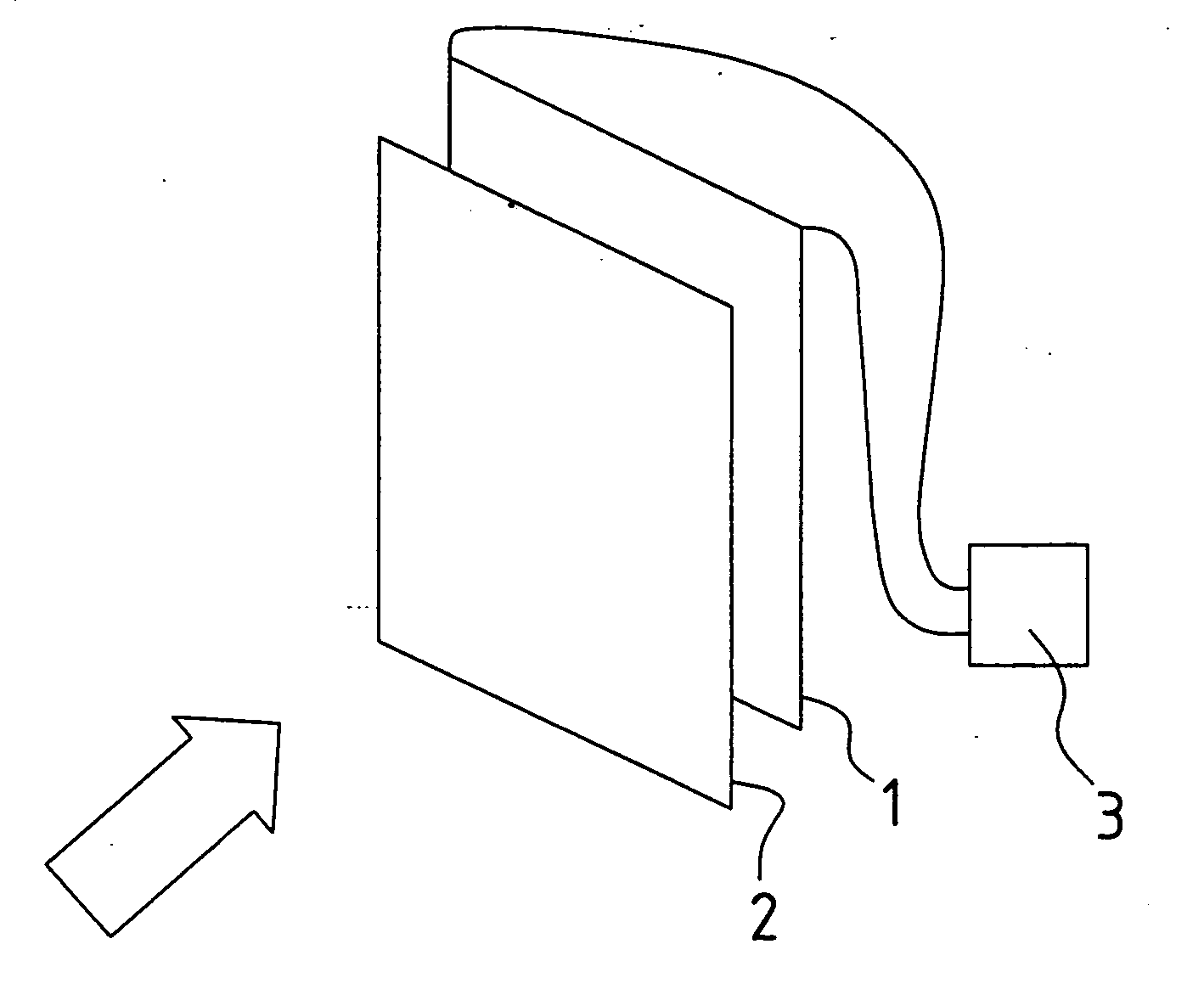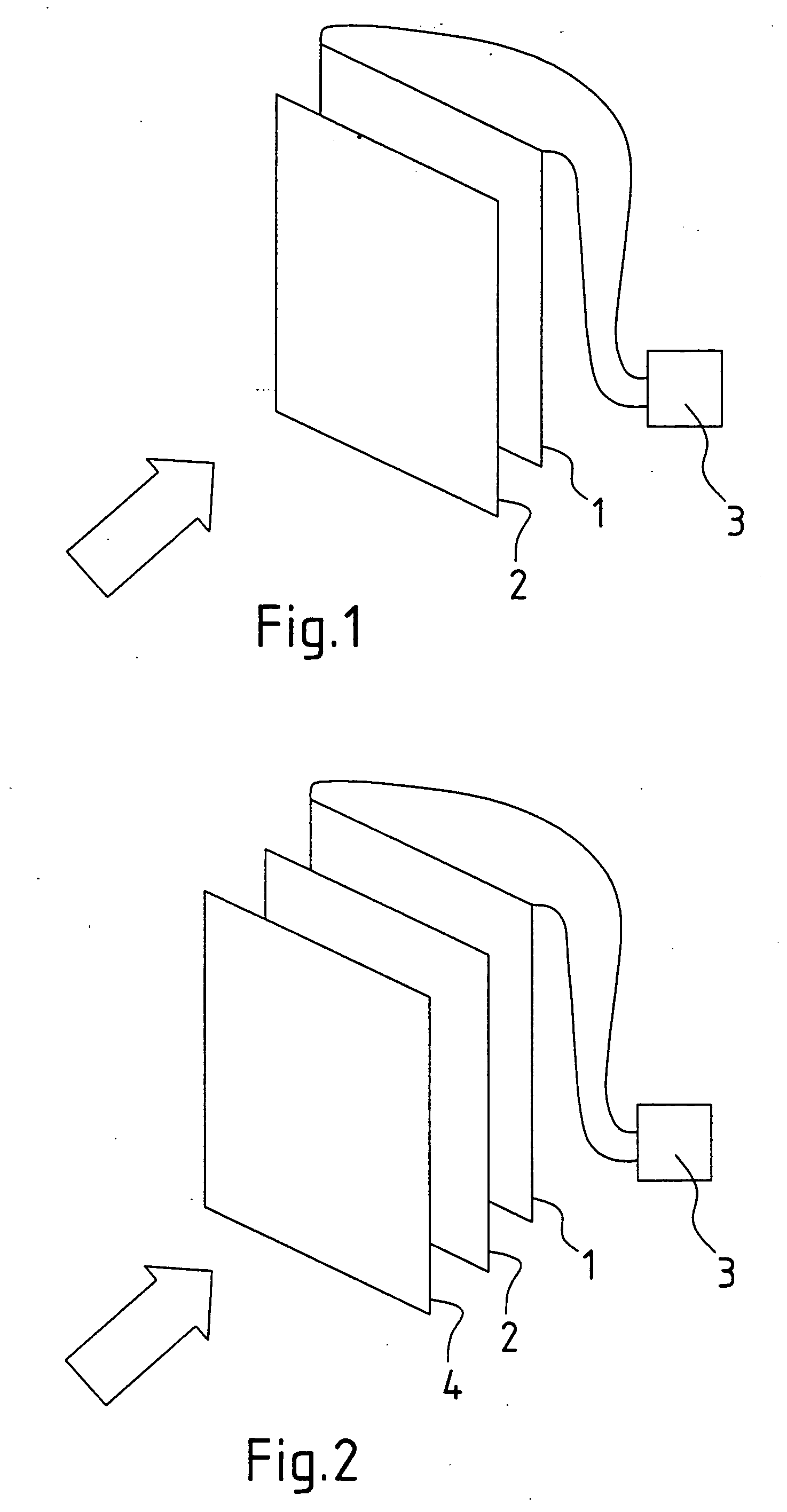Use of a photovoltaic element as sensor for checking the functioning of transmitters in the infrared range
a technology of infrared range and photovoltaic element, which is applied in the direction of photometry using electric radiation detectors, optical radiation measurement, instruments, etc., can solve the problems of inability to verify the function of infrared radiation for testing purposes, and inability to quantitatively measure the radiation power or output of the headlight, etc., to achieve reliable information regarding the functionality and the ability to verify the functionality of the emi
- Summary
- Abstract
- Description
- Claims
- Application Information
AI Technical Summary
Benefits of technology
Problems solved by technology
Method used
Image
Examples
Embodiment Construction
[0024]FIG. 1 shows a first sensor array for integral measurement of the beam power. Therein a photovoltaic element 1 can be seen, which could be, for example, a normal silicon solar cell. Further, a plastic VIS-filter 2 is provided in front of the photovoltaic element 1, which is transmissive only for light in the infrared range.
[0025] A galvanometer 3 is connected to the photovoltaic element 1.
[0026] With the shown sensor element the beam power of an infrared headlight can be measured. In order to provide quantitative information, it is further necessary to know the distance to the infrared headlight, in order to ensure that the beam power of the headlight is fully acquired by the photovoltaic element.
[0027]FIG. 2 shows a further sensor array. Therein a shield 4 is provided in addition to the elements shown in FIG. 1. By this shield the emission power is allowed to pass through in only a certain spatial angle. By the appropriate positioning of the shield the corresponding data f...
PUM
 Login to View More
Login to View More Abstract
Description
Claims
Application Information
 Login to View More
Login to View More - R&D
- Intellectual Property
- Life Sciences
- Materials
- Tech Scout
- Unparalleled Data Quality
- Higher Quality Content
- 60% Fewer Hallucinations
Browse by: Latest US Patents, China's latest patents, Technical Efficacy Thesaurus, Application Domain, Technology Topic, Popular Technical Reports.
© 2025 PatSnap. All rights reserved.Legal|Privacy policy|Modern Slavery Act Transparency Statement|Sitemap|About US| Contact US: help@patsnap.com


